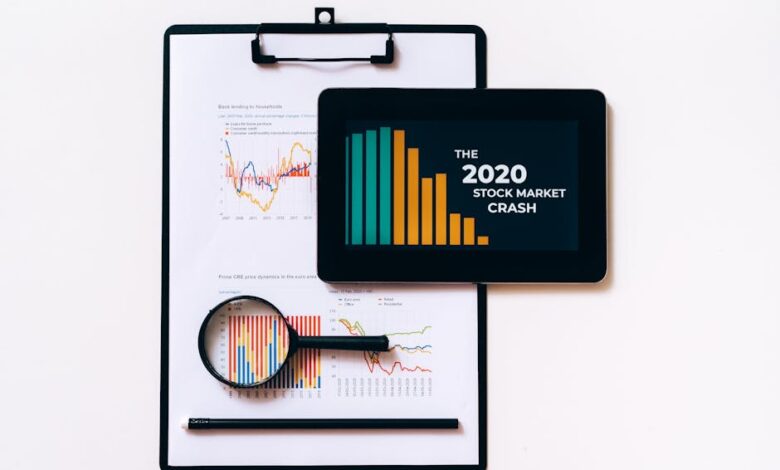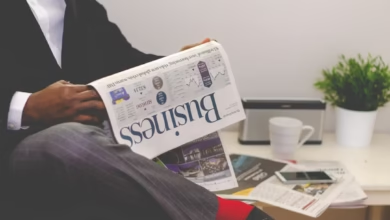Weathering the Economic Storm: Recognizing Recession Signs, Investment Strategies, and Lessons Learned for a Resilient Future

As economies around the globe experience cycles of growth and contraction, understanding the early warning signs of a recession becomes increasingly vital for individuals, businesses, and policymakers alike. Economic downturns can have far-reaching effects, influencing everything from consumer behavior to global trade dynamics. In this article, we will explore the early indicators that signal a potential recession, examine how various sectors are impacted, and discuss effective investment strategies during times of economic uncertainty. Additionally, we will delve into the crucial role of government stimulus measures in alleviating the effects of a recession, and how shifts in consumer behavior can reshape market landscapes. By reflecting on lessons learned from past recessions, we will highlight strategies that businesses can adopt to not only survive but thrive amid economic challenges. Join us as we navigate the complexities of recessionary economics and equip ourselves with the knowledge to better prepare for the storms ahead.
- 1. **Recognizing the Signs: Early Indicators of Economic Recession**
- 2. **Navigating the Storm: Investing Strategies for a Recessionary Environment**
1. **Recognizing the Signs: Early Indicators of Economic Recession**
Recognizing the signs of an impending economic recession is crucial for businesses, investors, and policymakers alike. Several early indicators can suggest a downturn is on the horizon.
One of the primary signs is a decline in consumer confidence. When households feel uncertain about their financial future, they tend to reduce spending, which can lead to decreased demand for goods and services. This shift can be reflected in consumer sentiment surveys and spending reports, as well as in retail sales data.
Another key indicator is a slowdown in manufacturing activity. Metrics such as the Purchasing Managers' Index (PMI) can provide insights into business conditions. A PMI reading below 50 typically indicates contraction, suggesting that manufacturers are experiencing reduced orders and production, which can foreshadow broader economic weakness.
In addition, rising unemployment rates can signal trouble. When businesses begin to lay off workers or halt hiring, it can create a ripple effect, further dampening consumer spending and overall economic activity. Monitoring labor market statistics, including initial jobless claims, can provide early warnings of potential layoffs.
Stock market volatility is also a significant signal. A sustained decline in stock prices can reflect investor pessimism about future economic prospects. Falling stock values can impact household wealth, prompting consumers to cut back on spending even further.
Lastly, changes in interest rates and credit conditions can be telling. If central banks begin to signal a tightening of monetary policy, it may indicate concerns about inflation or overheating, which could eventually lead to a recession if economic growth falters. Conversely, if lending standards tighten and credit becomes less accessible, businesses and consumers alike may struggle to finance their activities, contributing to a slowdown.
By paying attention to these early warning signs, stakeholders can better prepare for potential economic downturns, allowing them to adapt and respond more effectively to the challenges ahead.
Economic recessions are characterized by a decline in economic activity across various sectors, leading to significant impacts on businesses, consumers, and governments. Early warning signs of a recession often include rising unemployment rates, decreasing consumer confidence, falling stock market prices, and a slowdown in manufacturing and retail sales. These indicators can signal potential challenges ahead, prompting stakeholders to assess their strategies.
Different sectors react to recessions in distinct ways. For instance, luxury goods and non-essential services typically suffer as consumers cut back on spending, while essential services, such as healthcare and utilities, may remain stable or even grow. The housing market often experiences declines in home sales and construction activity, which can further exacerbate economic downturns.
Investing during a recession requires a strategic approach. Many investors gravitate toward defensive stocks—companies that provide essential goods and services, such as utilities and consumer staples—since they tend to perform better in challenging economic conditions. Additionally, diversifying investments and considering asset classes like bonds can help mitigate risks associated with stock market volatility.
Government stimulus plays a crucial role in mitigating recession impacts. During downturns, governments may implement fiscal policies, such as tax cuts or increased public spending, to stimulate demand and encourage economic activity. These measures can provide temporary relief to struggling sectors and support consumer spending.
Consumer behavior also shifts during economic downturns. Individuals tend to prioritize necessities over luxuries, leading to changes in spending patterns. This shift impacts businesses, prompting them to adjust their offerings and marketing strategies to cater to more budget-conscious consumers.
Furthermore, recessions can disrupt global trade and supply chains. Reduced consumer demand often leads to decreased imports and exports, affecting international relations and trade agreements. Supply chains may face challenges as companies reassess their production needs and inventory levels in response to market conditions.
Lessons learned from past recessions, such as the 2008 financial crisis, highlight the importance of financial resilience and adaptability. Businesses that maintain strong cash reserves, diversify their supply chains, and focus on customer relationships are better positioned to weather economic storms. Preparing for potential downturns involves proactive planning, including scenario analysis and stress testing, to ensure ongoing viability.
By understanding the multifaceted impacts of recessions and adjusting strategies accordingly, businesses and investors can navigate economic challenges more effectively.
2. **Navigating the Storm: Investing Strategies for a Recessionary Environment**
Investing during a recession can be daunting, yet it also presents unique opportunities for those who are well-prepared. Understanding the characteristics of a recession and the prevailing market conditions is crucial for developing effective investment strategies.
First, it’s important to focus on defensive sectors that tend to perform better during economic downturns. Industries such as utilities, healthcare, and consumer staples often provide stable returns because they offer essential products and services that remain in demand regardless of economic conditions. Investing in these sectors can help mitigate risks associated with market volatility.
Another strategy involves diversifying investment portfolios. By spreading investments across various asset classes, including stocks, bonds, and real estate, investors can reduce their overall risk. During a recession, bonds, particularly government securities, may provide a safe haven as they are generally less volatile than stocks. Additionally, considering dividend-paying stocks can offer a source of income even when stock prices fluctuate.
Value investing can also be a prudent approach during recessionary times. This strategy entails seeking out undervalued companies with strong fundamentals that are likely to rebound when the economy improves. Investors should conduct thorough research to identify firms with solid balance sheets and manageable debt levels, as these companies are often better positioned to weather economic storms.
Furthermore, maintaining a cash reserve can be advantageous. Having liquid assets allows investors to take advantage of buying opportunities when prices are low, enabling them to acquire quality investments at a discount. This approach also provides a cushion for any unexpected financial needs during uncertain times.
Lastly, it is essential to stay informed and adaptable. Market conditions can change rapidly during a recession, and being aware of economic indicators and trends can help investors make timely decisions. Engaging with financial advisors and utilizing economic analysis can provide valuable insights that guide investment choices.
In summary, while recessionary environments pose challenges, they also offer strategic avenues for investment. By focusing on defensive sectors, diversifying portfolios, exploring value opportunities, maintaining cash reserves, and staying informed, investors can navigate the storm and emerge in a stronger position when the economy recovers.
In conclusion, understanding the early warning signs of an economic recession is crucial for both individuals and businesses as they navigate the complexities of a shifting economic landscape. The impact of recessions ripples through various sectors, influencing everything from consumer spending to global trade dynamics. During these challenging times, strategic investing becomes essential, allowing savvy investors to capitalize on opportunities that arise amidst adversity.
Government stimulus plays a pivotal role in cushioning the effects of downturns, providing a safety net that can help stabilize economies and support vulnerable populations. As consumer behavior shifts, it is vital for businesses to adapt quickly, re-evaluating their strategies to meet changing demands and prepare for potential challenges ahead.
Reflecting on past recessions offers valuable lessons that remain relevant today, emphasizing the importance of resilience and adaptability in the face of economic uncertainty. By proactively preparing for and responding to recessionary pressures, businesses can not only survive but thrive, turning potential setbacks into opportunities for growth. As we look to the future, fostering a deeper understanding of these dynamics will empower all stakeholders to better navigate the inevitable ups and downs of the economic cycle.





